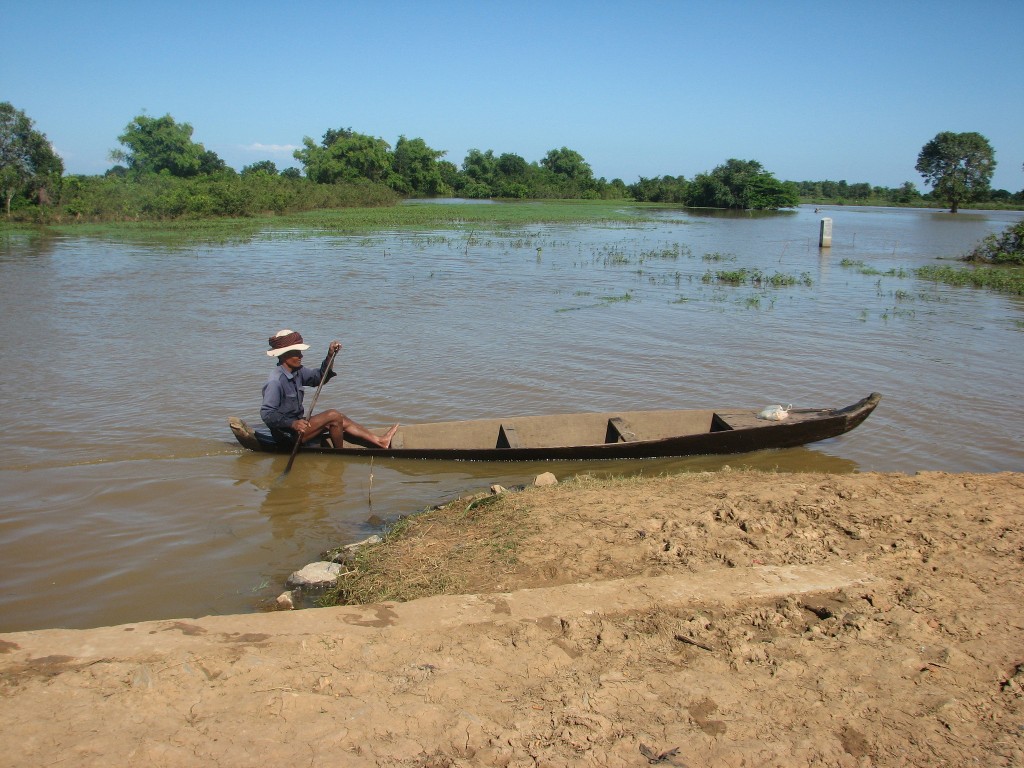
Community fishery refuges, Battambang, Cambodia. Photo by Alan Brooks/WorldFish, taken on 2 November 2011. Licensed under CC BY-NC-ND 2.0.
Fishing practices in Cambodia are classified into three broad categories: small-scale or family fishing, medium-scale and large-scale or commercial fishing.
In 2001, aware of the need to safeguard fish stocks and in an attempt to resolve long-standing conflicts between small-scale and large-scale fishers, the government embarked on a reform of the country’s fisheries management and regulations. This happened in two phases. First, in 2001, 56 percent of total fishing lots, previously allocated for private owners, were designated as open access. Then, in 2012, the remaining fishing lots were abolished and fishing rights given to all Cambodian citizens to manage natural fisheries resources in their area through the establishment of community fisheries (CFi).1
Fisheries management suffers from a number of problems that are mostly related to governance issues. Another important issue is lack of community involvement, or rather, failure to engage local communities in conserving fisheries resources. Despite the release of fishing grounds for community use, illegal fishing and conflict remain a challenge.2
Community fisheries were initially introduced into Cambodia in the late 1990s as a means to improve the management of local fisheries and ensure local food security.
MAFF’s Annual Report with data for 2016 reported 516 community fisheries covering 332,168 individuals. Of the total, 475 are inland fisheries while 41 are marine fisheries.3 394 of these community fisheries have been officially registered with MAFF while others are in the process of registering.
The 2006 Fishery Law defines community fishing areas as “the fishery domain of the state handed over to the community fishery under the agreement between the chief of Cantonment of the Fisheries Administration and the communities or groups of citizens living inside or around the fishery domain. Those citizens are mainly dependent on fisheries for their daily life and using traditional fishing gears for fishing … [sic.].”4
In 2007 the government issued a Sub-decree on Community Fisheries Management which sets out rules for the establishment, management and use of CFi. Only small-scale fishing gear can be used in CFi. By law, CFi come under the general jurisdiction of MAFF.
Although remarkable progress has been made, CFi continue to face such challenges as weak law enforcement and lack of capacity, incentives and income for people to actively participate in the sustainable management of CFi.5
Last updated: 21 December 2018
Related to community fisheries
- Agriculture and fishing
- Fishing policy and administration
- Environment and natural resources policy and administration
References
- 1. Kaing Khim. 2013. “Fisheries Tenure in Cambodia: Case of the Community Fisheries Tenure,” presentation at Technical Workshop Awareness Raising on the Voluntary Guidelines on the Responsible Governance of Tenure of Land, Fisheries and Forests in the Context of National Food Security, Bangkok, Thailand, August 2013. http://www.fao.org/fileadmin/templates/rap/files/meetings/2013/130814-tenure-02.pdf.
- 2. “Fisheries.” Council for the Development of Cambodia (CDC). Accessed September 1, 2015. http://www.cdc-crdb.gov.kh/cdc/ngo_statement/fisheries.htm.
- 3. MAFF 2017. MAFF Annual Report 2016–2017. http://www.twgaw.org/wp-content/uploads/2017/04/2017_MAFF-Annual-Report-2016-2017-_En.pdf Accessed 21 December 2018.
- 4. Fisheries Law 2006, Appendix.
- 5. “Fisheries.” Council for the Development of Cambodia (CDC). Accessed 1 September 2015. http://www.cdc-crdb.gov.kh/cdc/ngo_statement/fisheries.htm.

